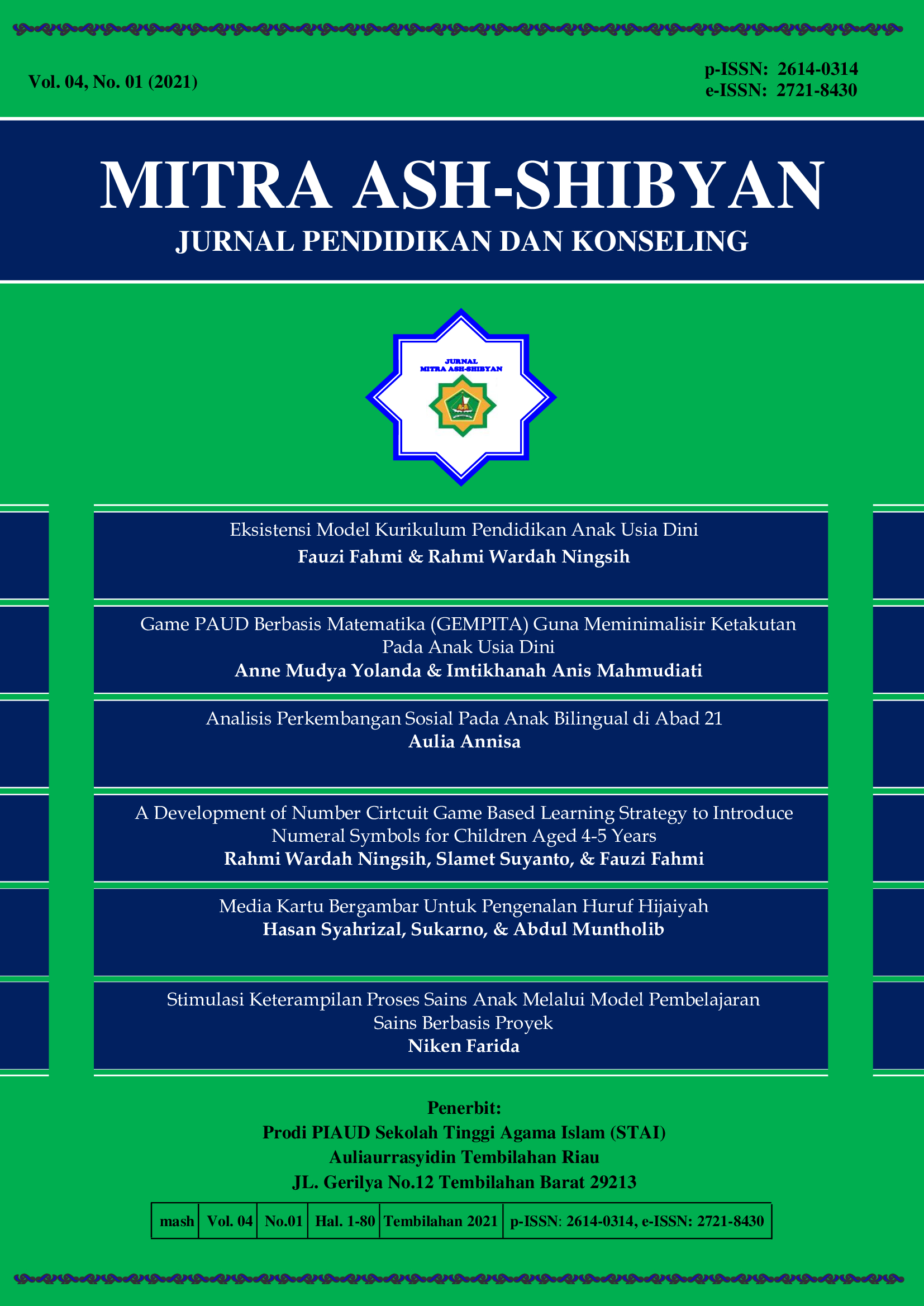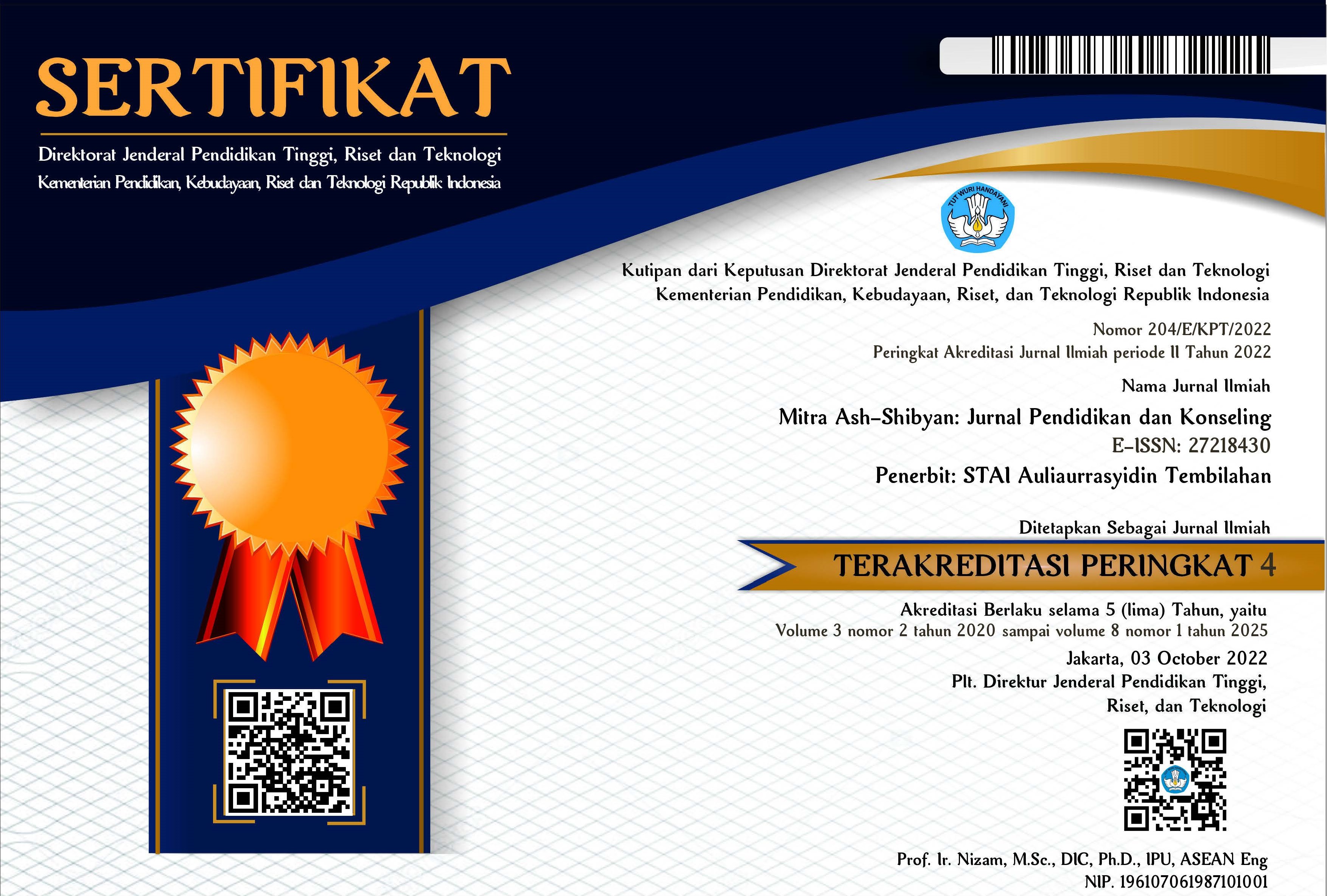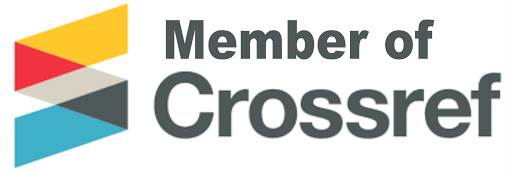A Development of Number Circuit Game Based Learning Strategy to Introduce Numeral Symbols for Children Aged 4-5 Years
DOI:
https://doi.org/10.46963/mash.v4i01.231Keywords:
Learning strategies, Number circuit games, introduction to numeral symbolsAbstract
Understanding the concept of numeral symbols in early childhood is fundamental to understanding mathematical concepts in the future. In view of that, children aged 4-5 years found many problems such as unable to distinguish the form of number symbols, unappropriated learning strategies, and monotonous learning activities. This study aimed to: (1) develop the learning strategies using number circuit games to introduce numeral symbols for 4-5-year-old-children; (2) assess the effectiveness of implementing number circuit games as the learning strategies introducing numeral symbols for 4-5-year-old children. ADDIE with five stages – namely analysis, design, development, implementation, and evaluation – was adopted in this research. The data were analyzed descriptively through qualitative and quantitative techniques. The evidence revealed that: (1) the introduction of numeral symbols for 4-5-year-old children by memorizing and understandings required the implementation of game-based learning strategies; (2) number circuit games which were modified based on the material, the implementation, and the purpose were suitable for children of 4-5 years old; (3) learning strategies using number circuit games to introduce numeral symbols for children of 4-5 year with p-value. Sig 0.000 < 0.05 had revealed that there were significant differences in children’s ability in identifying the numeral symbols.
Downloads
References
Aistear. (2017). Learning and developing through play. The Early Childhood Curriculum Framework, Vol. I 53–70.
Aunio, P. (2006). Number sense in young children international group differences and an intervention programme for children with low and average performance. Helsinki (10-30). https://doi.org/10.1311/j.2151-6952.1981.tbXZC1513.x
Branch, R. M. (2009). Instructional design: The ADDIE approach. INJETSE, (2-45). https://doi.org/10.1007/978-0-387-09506-6
Friso-van, B. I., Kroesbergen, E. H., & Van Louis, J. E. H. (2014). Number sense in kindergarten children: Factor structure and working memory predictors. Learning and Individual Differences Journal, 33, 23–29. https://doi.org/10.1016/j.lindif.2014.05.003
Kaplan, H. A. (2012). Prospective preschool teachers ideas for developing the number sense of children. Procedia-Social and Behavioral Sciences, 46(2004), 3870–3874. https://doi.org/10.1016/j.sbspro.2012.06.163
Paranita, D. , & Fera, D. (2018). pengembangan permainan sirkuit mitigasi bencana gempa bumi untuk meningkatkan self-awareness
anak usia dini. Jurnal Caksana-Pendidikan Anak Usia Dini, 1(2), 172–187
Santrock, J.W. (2007). Perkembangan anak. (Terjemahan oleh Mila Rhmawati & Anna Kuswanti). Jakarta : Erlangga. (Edisi asli diterbitkan tahun 1996 oleh Brown & Benchmark Publishers.
Siegler, R. S., & Ramani, G. B. (2011). Improving low-income children’s number sense. space, time and number in the brain. Elsevier Inc, Vol. 1, (4-7). https://doi.org/10.1016/B978-0-12-385948-8.00021-9
Sugioyono. (2015). Metode penelitian kuantitatif, kualitatif, dan R&D. Bandung: Alfabeta.
Suyanto, S. (2005). Dasar-dasar pendidikan anak usia dini. Yogyakarta: Hikayat Publishing
Whitlow, G. (2018). Elementary circuit training. Journal of Health, Physical Education, Recreation, 39(5), 26–27. https://doi.org/10.1080/00221473.1968.10611718
Downloads
Published
Issue
Section
License
Authors who publish with this journal agree to the following terms:
1. Copyright on any article is retained by the author(s).
2. The author grants the journal, right of first publication with the work simultaneously licensed under a Creative Commons Attribution shareAlike 4.0 International License that allows others to share the work with an acknowledgment of the work’s authorship and initial publication in this journal.
3. Authors are able to enter into separate, additional contractual arrangements for the non-exclusive distribution of the journal’s published version of the work (e.g., post it to an institutional repository or publish it in a book), with an acknowledgment of its initial publication in this journal.
4. Authors are permitted and encouraged to post their work online (e.g., in institutional repositories or on their website) prior to and during the submission process, as it can lead to productive exchanges, as well as earlier and greater citation of published work.
5. The article and any associated published material is distributed under the Creative Commons Attribution-ShareAlike 4.0 International License







2.png)



